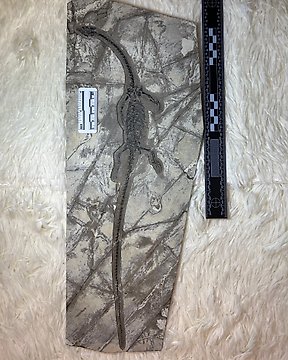
Hyphalosaurus - Fossil matrix - Hyphalosaurus - 49 cm - 18 cm
No. 79721473

No. 79721473

Aragosta cinese fossile! Il gambero eterociclico è un grande invertebrato trovato a Jehol Biota nel Liaoning occidentale. Si tratta di un fossile di gambero d'acqua dolce, appartenente alla famiglia dei Ciclopodi del sottordine dei gamberi. La lunghezza del corpo è di 10-14 cm, con testa e petto grandi, che formano una forma cilindrica. La spada frontale è ben sviluppata e la scanalatura del collo è semplice. Le prime tre paia delle cinque paia di piedi sono dotate di pinze, di cui la prima coppia è la più sviluppata, a forma di chela di granchio, simmetricamente sinistra e destra, e la quarta e la quinta coppia di artigli. L'arto della coda ha la forma di un'ala di farfalla, con ampie foglie esterne.
Vivono in laghi di acqua limpida e sono onnivori, nutrendosi di piccoli pesci come alghe, gasteropodi, bivalvi e persino pesci con pinne di lupo.
Nome: aragosta cinese
Tempo: Cretaceo
Orizzonte: Formazione Yixian
Origine: Lingyuan, Liaoning
Fossil Chinese lobster! Heterocyclic shrimp is a large invertebrate found in Jehol Biota in western Liaoning. It is a freshwater crayfish fossil, belonging to the family Cyclopodae of Crayfish suborder. The body length is 10-14cm, with a large head and chest, forming a cylindrical shape. The frontal sword is well-developed, and the neck groove is simple. The first three pairs of the five pairs of feet have forceps, with the first pair being the most developed, in the shape of a crab claw, symmetrically left and right, and the fourth and fifth pairs of claws. The tail limb is in the shape of a butterfly wing, with broad outer leaves.
They live in clear water lakes and are omnivorous, feeding on small fish such as algae, gastropods, bivalves, and even wolf finned fish.
Name: Chinese Lobster
Time: Cretaceous
Horizon: Yixian Formation
Origin: Lingyuan, Liaoning
How to buy on Catawiki
1. Discover something special
2. Place the top bid
3. Make a secure payment